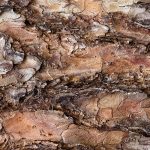When we talk about hanging succulents, there is one plant that we cannot overlook. It is commonly known as a fishbone cactus and is one of the most unique and decorative looking indoor plants that we can have at home.
If you want to surprise your visitors or simply improve the atmosphere of your home with this striking cactus, keep reading this complete guide from EcologíaVerde where we tell you all about the Epiphyllum anguliger and its care.
You may also be interested in: Marquise plant: care
Characteristics of Epiphyllum anguliger
Its scientific name is Epiphyllum anguliger, although it is more commonly referred to as a ric rac cactus, zig zag orchid cactus or, as mentioned above, a fishbone cactus. All these names make unmistakable reference to the particular shape of its fleshy and flat stems, which fall as they grow and zigzag in the form of a double saw or the typical herringbone.
It is an epiphytic cactus native to Mexico, which in its natural environment grows on the branches or trunks of other trees, in tropical environments and far from the desert aridity that the word cactus brings to mind for many of us. Its stems reach a length of about 30 cm and the plant produces large and very showy flowers, so much so that they are one of the main attractions of this species.
If you want to know more about Epiphytic Plants: what they are, types and examples, do not hesitate to take a look at this article that we recommend.
When does Epiphyllum Anguliger bloom?
The beautiful flowers of the herringbone cactus can reach a size of up to 20 cm, which is very considerable considering the small size of the plant itself. They are pink or yellow, with very striking shades, with peduncles that sprout from the ends of the leaves.
They are nocturnal flowers, with a sweet aroma of great intensity, and the plant produces them when conditions are optimal, between late autumn and early winter, with the arrival of the cold.
We leave you this other post from EcologíaVerde with some aromatic indoor plants that you may find interesting.
Climate for Epiphyllum anguliger
The fishbone cactus is a plant of tropical origin and, like practically all tropical plants, it needs an environment that shares certain characteristics with this type of climate.
It does not tolerate very high or very low temperatures, having to be kept between 10 ºC and 25 ºC, being able to withstand somewhat higher temperatures only if it is well protected from the sun. Because of this, its most common cultivation in temperate climates is as a houseplant.
In addition, Epiphyllum anguliger will appreciate a not very dry environment, with some ambient humidity. Since our homes tend to be fairly dry places in most areas, it will be necessary to spray water or otherwise give it moisture.
This article on Outdoor Tropical Plants might also interest you to learn more about the subject.
Location for Epiphyllum anguliger
This plant needs a large amount of light, although it does not need it to be of direct impact. As with many tropical epiphytes, it will be enough to have it in a very bright location but protected from the direct incidence of the sun’s rays, especially in the hours of greatest intensity.
Substrate for Epiphyllum anguliger
This cactus needs, like almost all epiphytes, a very light and loose substrate, which provides the best possible drainage. If you don’t have good enough drainage, it’s very likely that your roots will rot from excess moisture and the plant will wilt.
Use specific substrate for cacti or epiphytic plants that you can enrich with worm castings and perlite to improve both their nutrients and water-retaining properties. It is vital that, if grown in a pot, it has drainage holes.
Find out how to make worm castings and Perlite for plants: what it is, what it is for and how to use it in these other two posts from EcologíaVerde that we suggest.
Watering Epiphyllum anguliger
The most important thing is to maintain an adequate level of ambient humidity, which can be achieved:
- Spraying water on the plant daily.
- Place the pot on a tray with water and stones on it, so that evaporation provides constant humidity.
Regarding watering, the herringbone cactus is not demanding, and it will be enough to water it every 3 or 4 days in the warm months, letting the substrate dry slightly between waterings, and weekly in the cold months.
Fertilizing Epiphyllum anguliger
Most epiphytic plants need an occasional supply of fertilizer to continue growing strong, since their roots are not good at absorbing nutrients. It is best to use specific fertilizer for succulents at the beginning of spring or add some worm castings to your substrate.
To learn more about what fertilizers are and their types, check out this post that we suggest.
Transplanting and multiplying the fishbone cactus
When the leaves fall overcovering the pot and it is too big for its container, there are two options: transplant it to a new larger pot, the most recommended, or prune its stems carefully, thus being able to use the cut sections to multiply the cactus by cuttings.
Propagating it like this is very simple and it is enough to have cut the cutting with well-sharpened and disinfected scissors, preferably between spring and summer. Cuttings can be planted after letting them dry for a few hours, and it is best not to water them until they show signs of having begun to root, with the stem standing upright.
If you have any doubts about how to reproduce cacti by cuttings, do not hesitate to read this article from EcologíaVerde where we explain it to you.
If you want to read similar articles to Epiphyllum anguliger: care, we recommend that you visit our Garden Care category.










